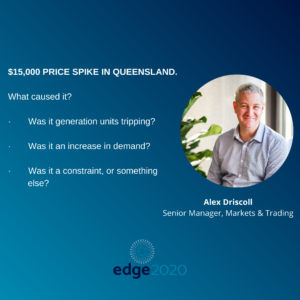After what seems like months of negative spot prices due to the increased penetration of renewable generation into a market, with lower than normal demand, we saw a glimpse of volatility yesterday.
In QLD for dispatch interval ending 09:45, we saw the first real spike for 2020. The 5-minute price reached $15,000/MWh!
What caused it?
-
Generation units tripping?
-
An increase in demand?
-
A constraint, or something else?

